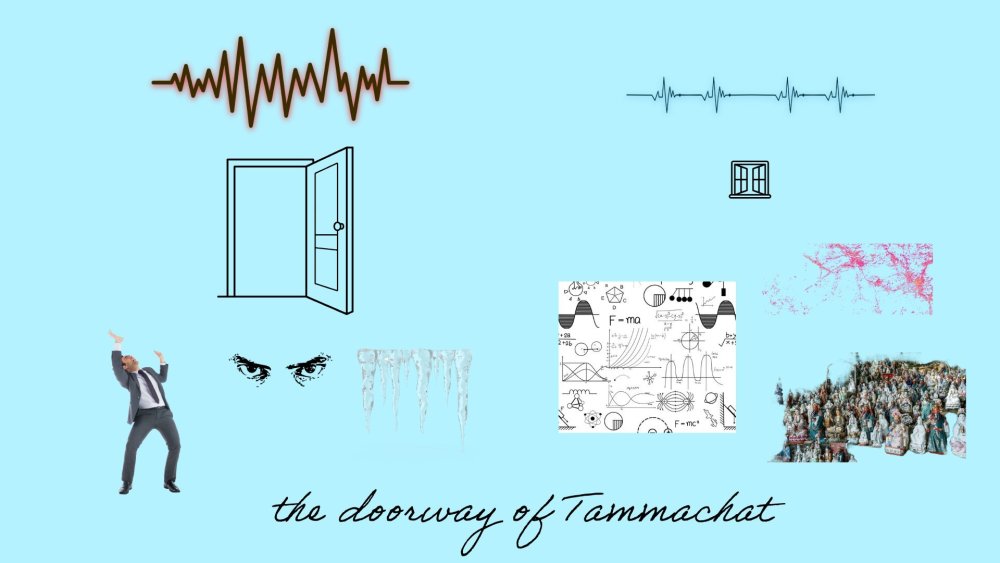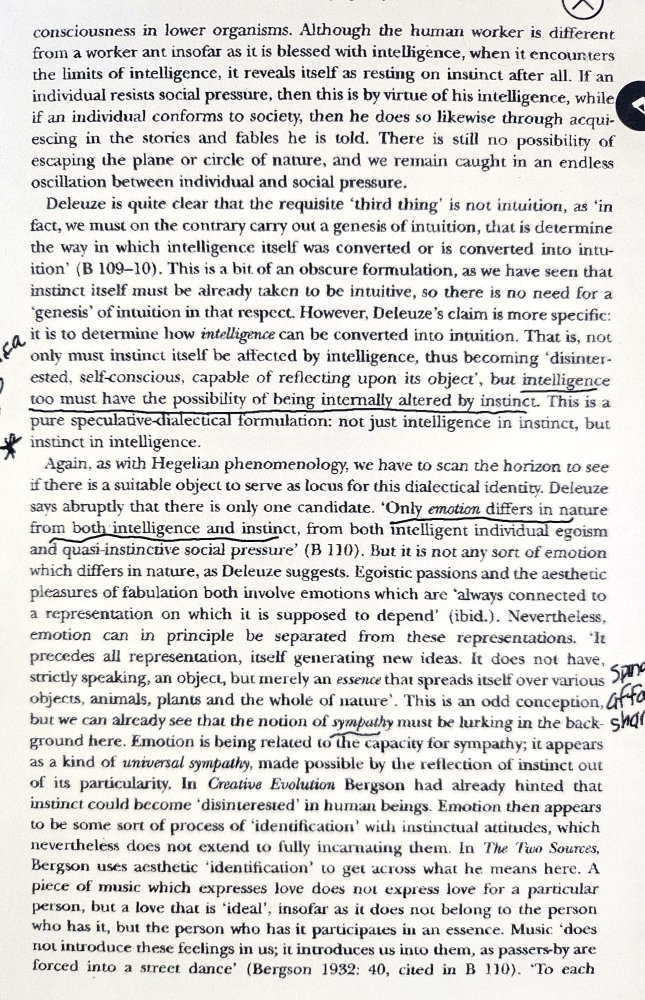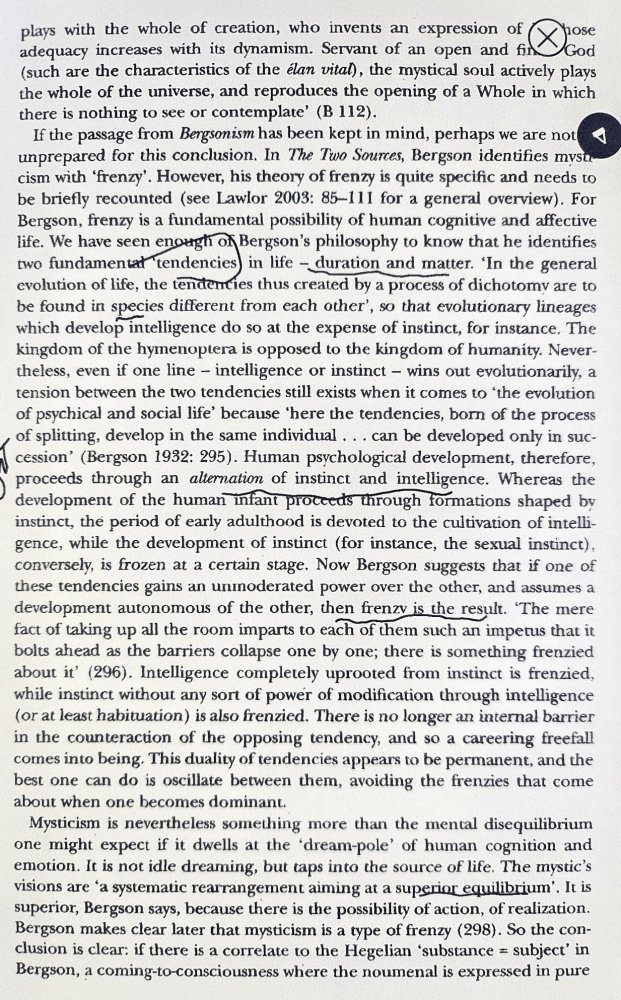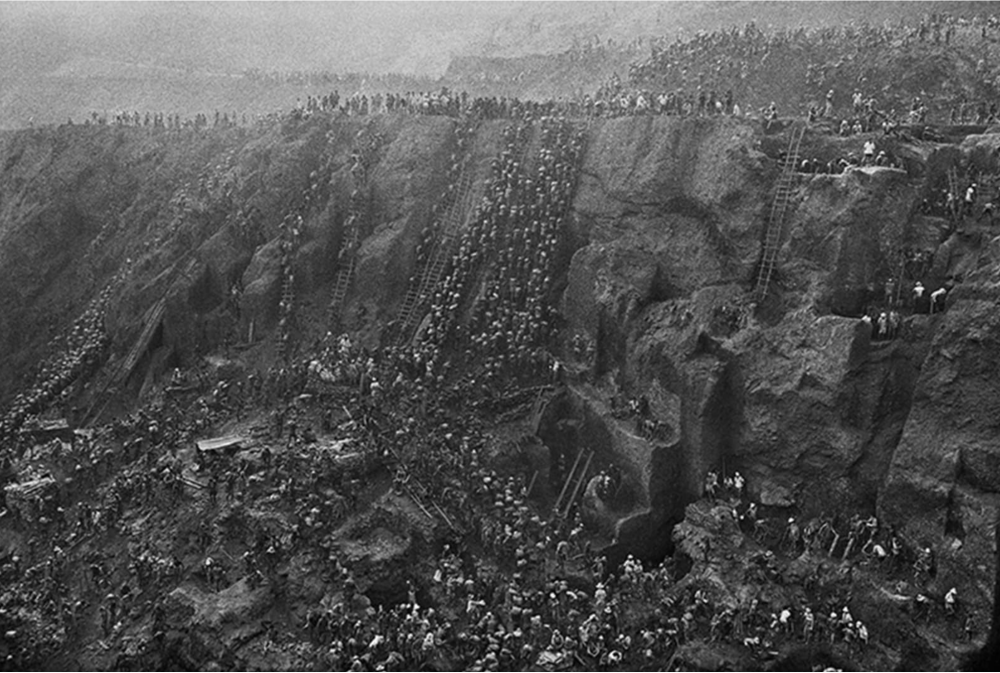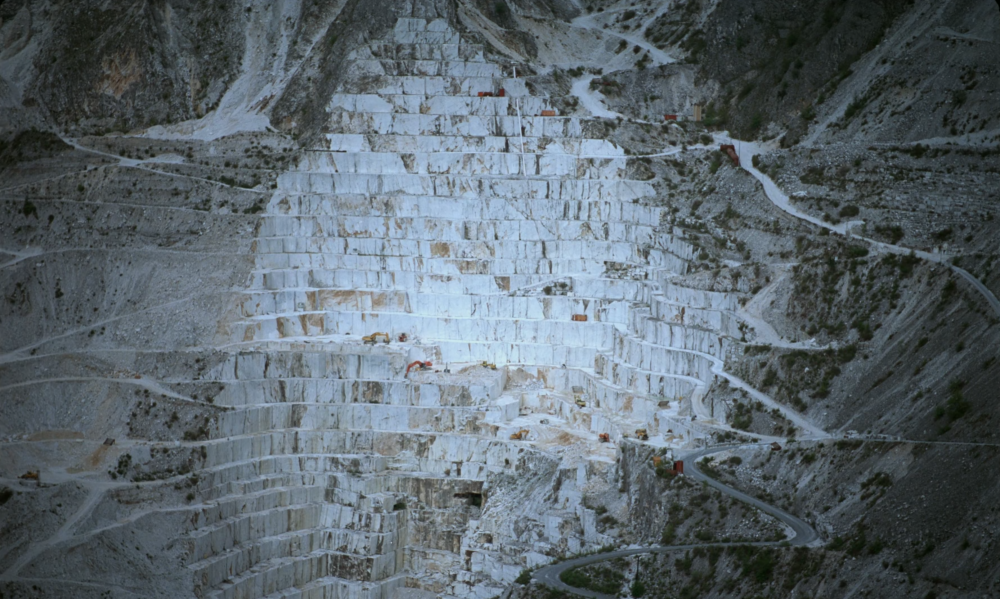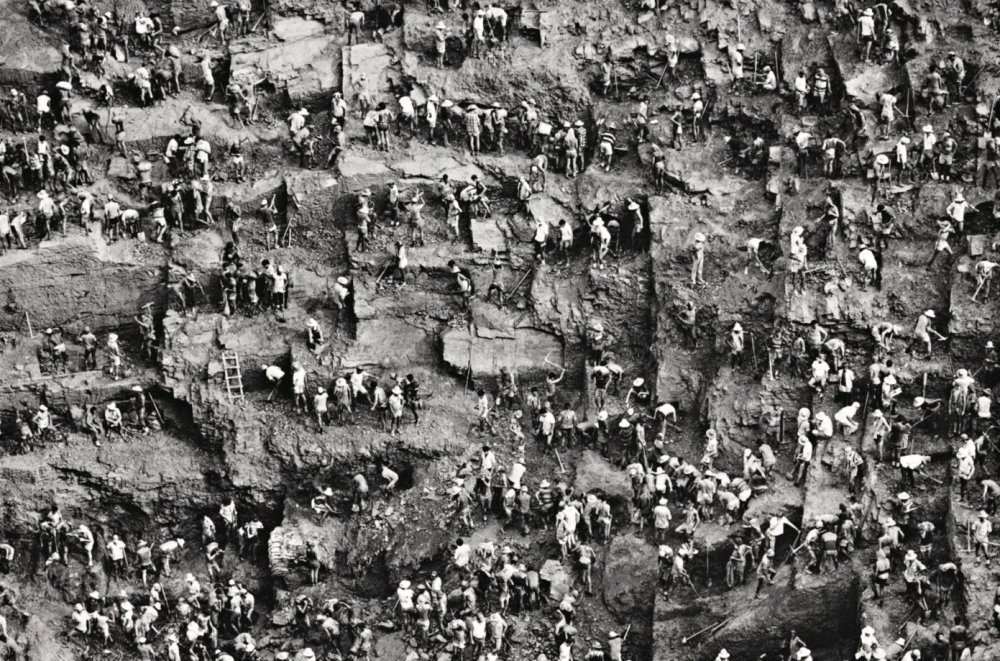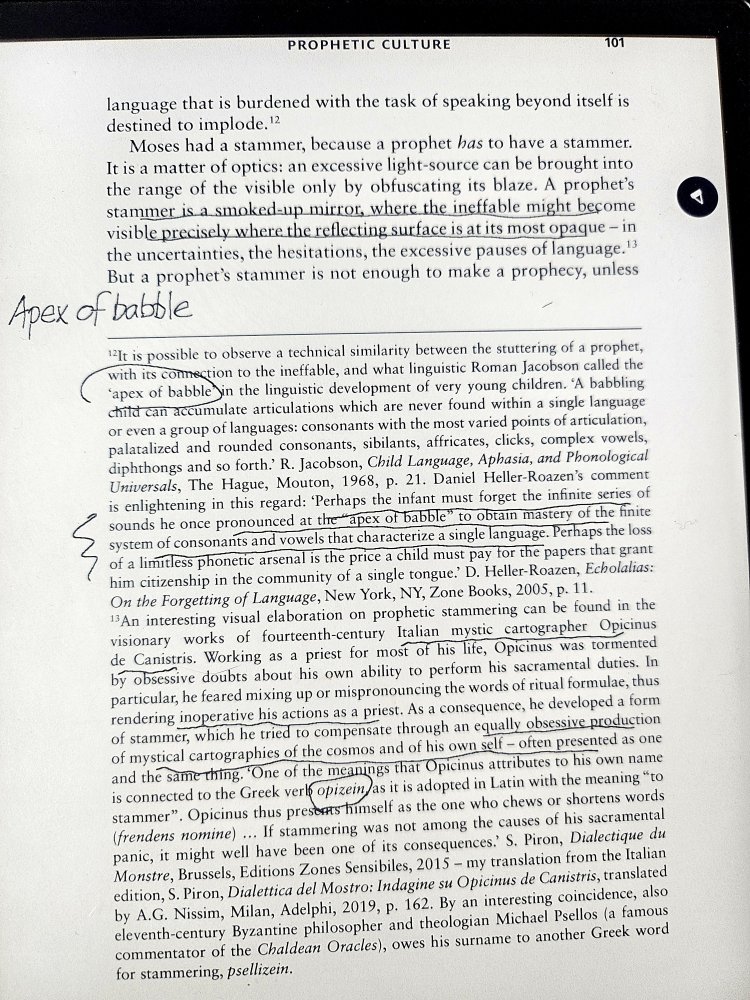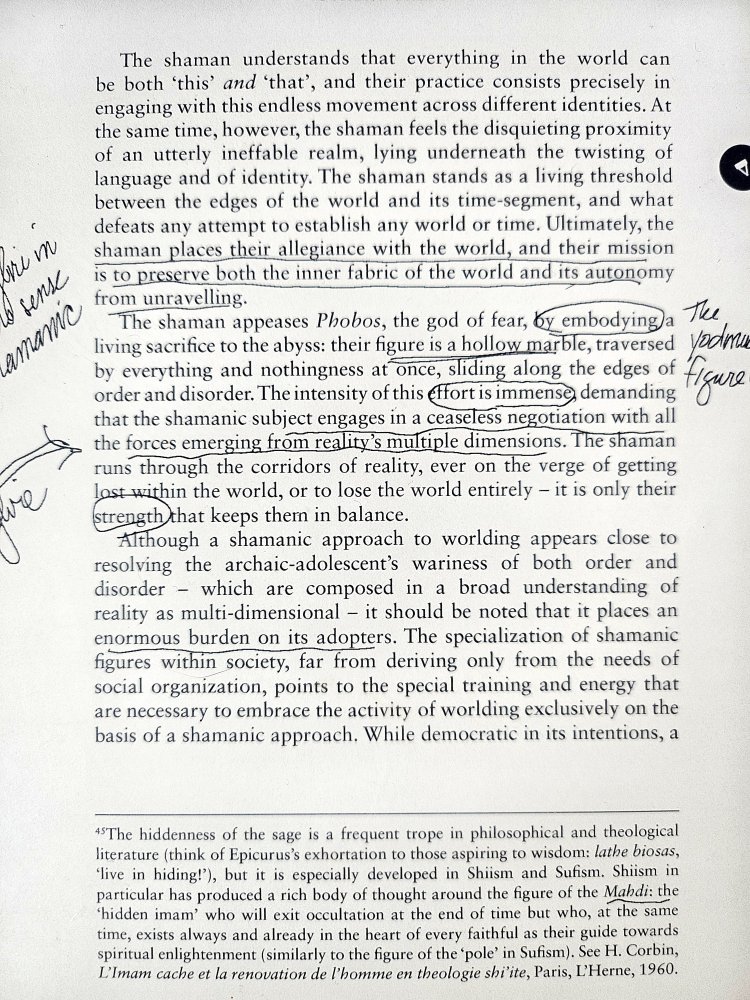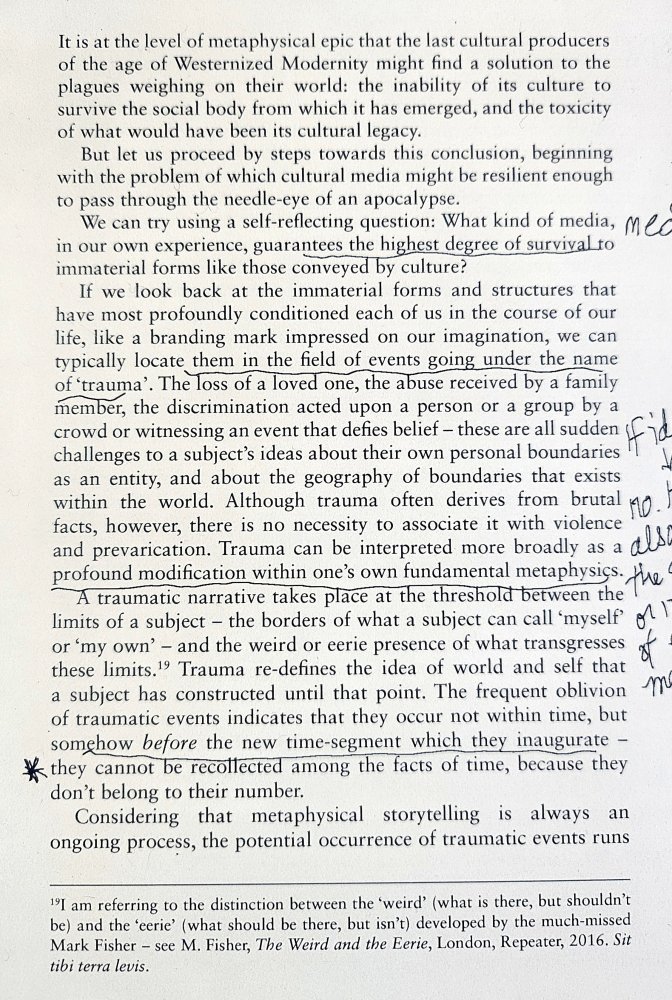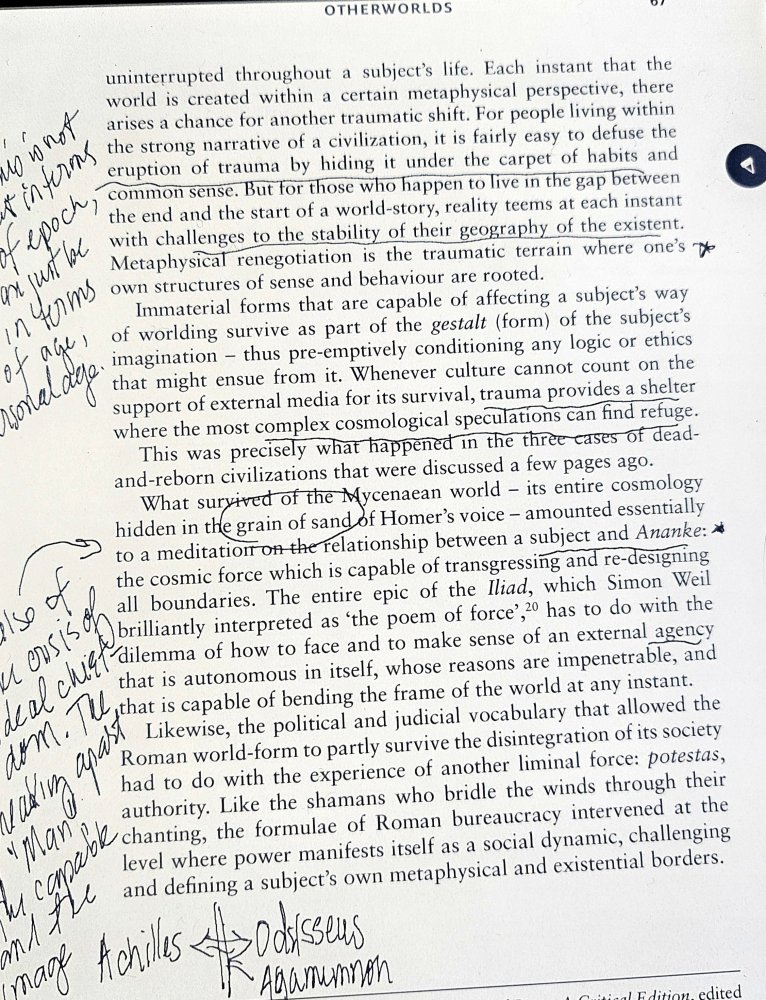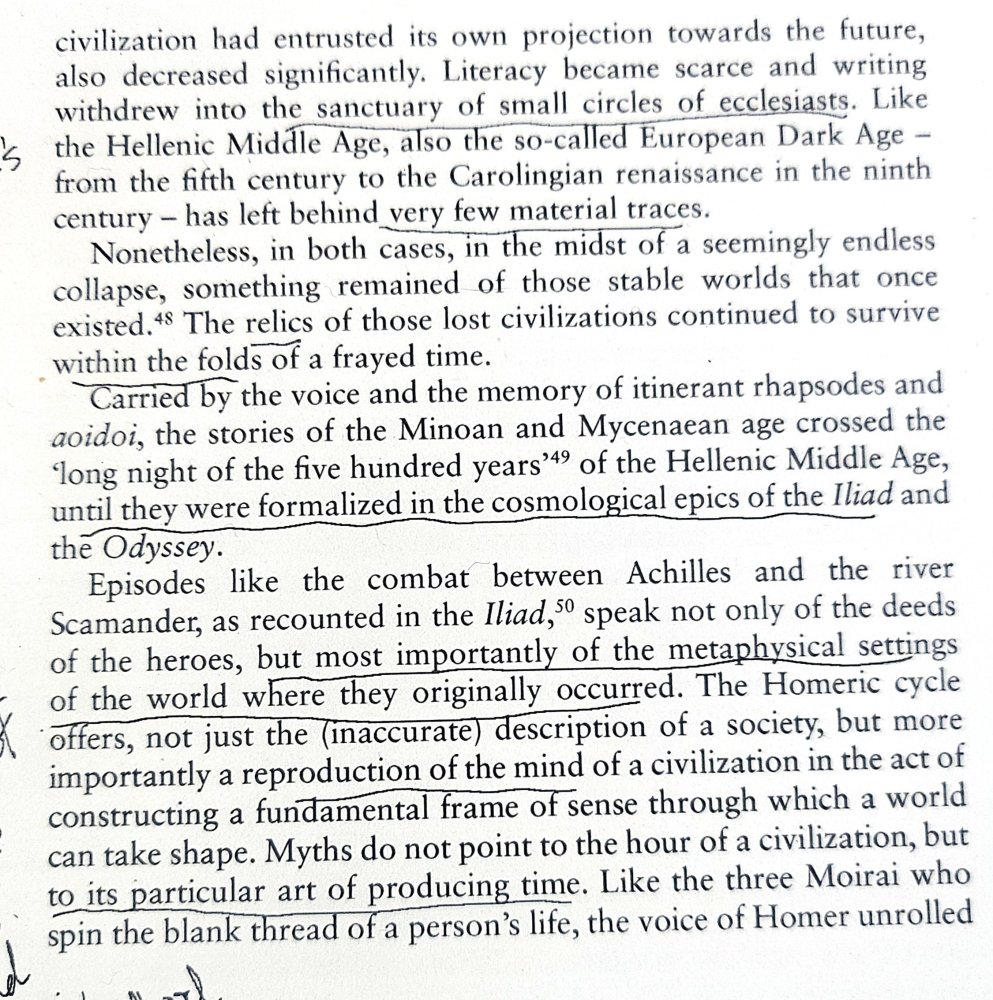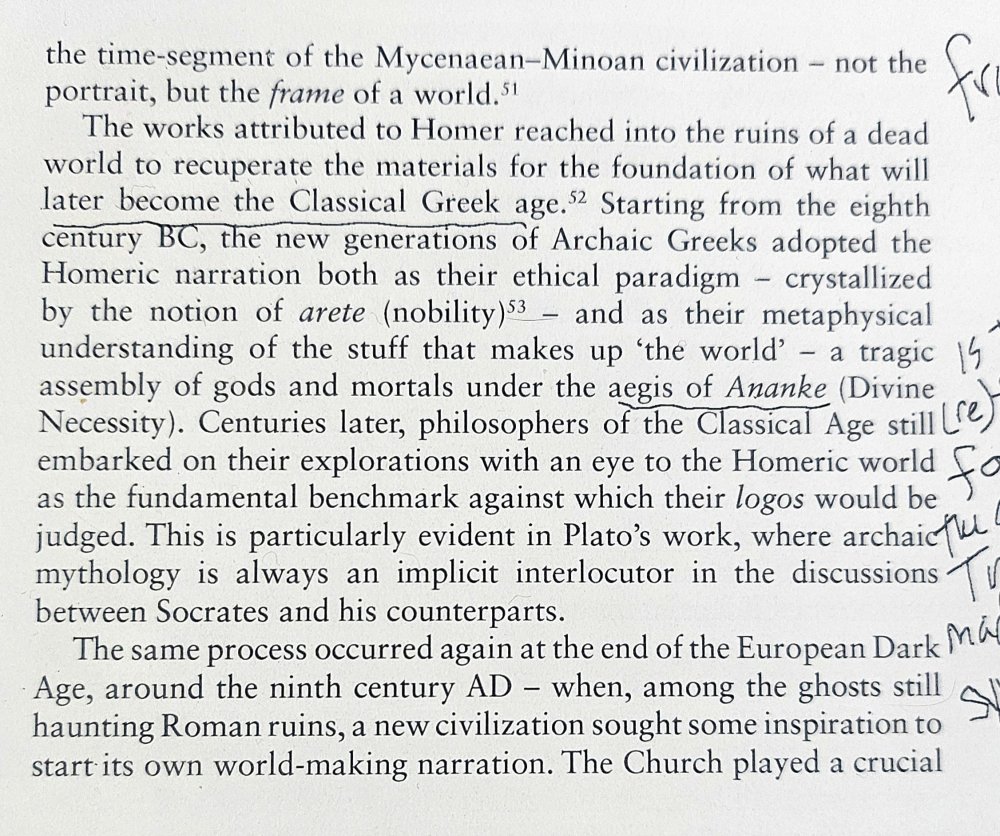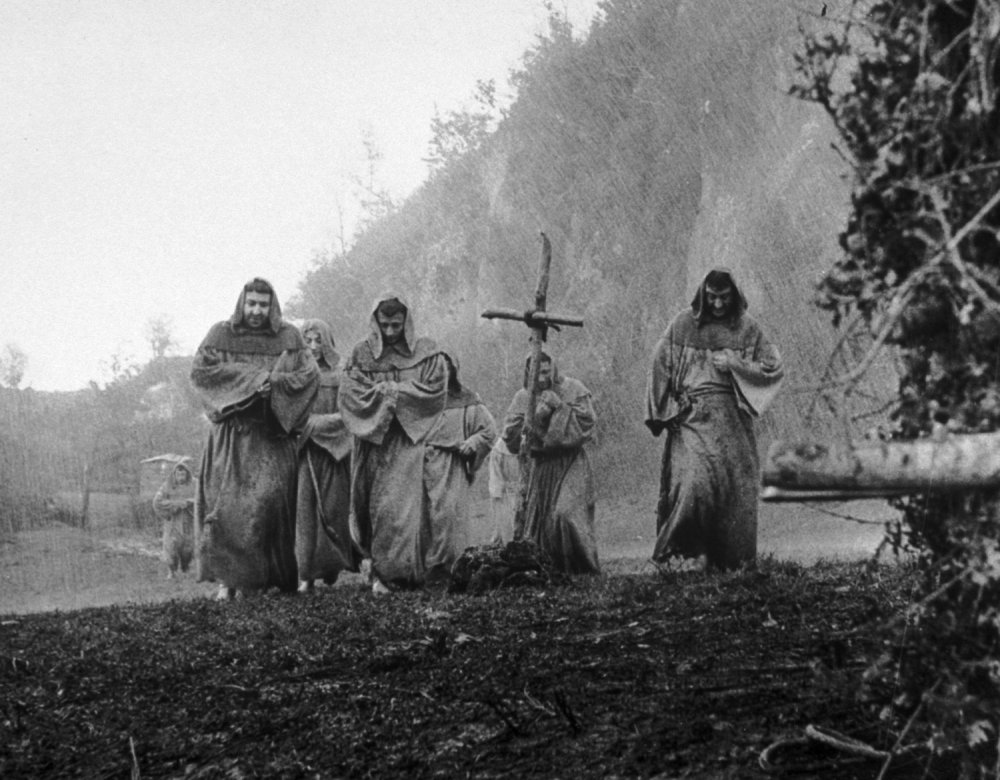-
Posts
2,264 -
Joined
-
Days Won
499
Everything posted by Kevin von Duuglas-Ittu
-
how to use head movement in Muay Thai: https://x.com/Egokind1/status/1906268431315280261 The highlight brings in general the thought that everyone has gotten spam-the-elbows happy in Thailand. This has happened quickly, and you could pretty much see the change start in real time because of COVID, beginning when they briefly banned clinch in paranoia (and with Entertainment Muay Thai). It feels like the Yodkhunpon template (which itself as an extreme outlier, and not well-esteemed in its time) got oversimplified. A lot of Muay Thai is just becoming Muay Elbow. As defense significantly erodes in Muay Thai though, the elbow is becoming a more and more effective go-to. It becomes chicken and egg. More elbows, less defense, the less defense, the more elbows are effective. The elbow may become the iconic cliche strike of Muay Thai, when at its height Muay Thai rather rarely featured elbows. They were seen as both "low" and largely ineffective.
-
What people don't really appreciate is that Nabil says he trained 13 months for this fight...and Superlek probably trained for two weeks. Good on Nabil, but the fight (and the promotion) just doesn't "mean" the same thing to each fighter, as much as there is enormous social media hype around these kinds of matchups. It's "entertainment" Muay Thai. In many ways it just isn't "real" for Thais (it lacks the social risks that gambled stadium fighting has). Fighting in the stadiums when Superlek was 18...that was REAL, because the social conditions of shame and pride and the cultural network of status struggle was infinitely at risk. One can't force it to be real.
-
I've been exploring ultrawides for a while, though basically drawn to them since I started shooting Muay Thai though I didn't know how to use them. There was always the sense that I wanted to weave together very different focal lengths. Since shooting with the Contax which I really love, on a bigger sensor format I've been drawn further in. So here is an experiment, using keyframes, big contrast video and telephoto images, to capture the mood and energy of a training session with Chatchai. This is was just a sketch from a single very quick shoot (I think 3 very short videos, maybe 100 still frames shot), maybe 5 minutes of photography altogether. I wanted it to be very bare bones to see if I could whip up an energy and feeling that I could maybe use on a larger project. The short is much aided by the music by Anand who I'm working with on a big, experimental writing project. wh
-
There is a compelling line of development in my thought, a new/different way to relate to the past which is not reactionary. More in the piece on Bergson. This joins together the psychodynamics of our personal history to even thoughts about Muay Thai's past, the relevance of the Golden Age and it's own past, a fundament of how we perceive the value and resource of the past. When we have championed the Golden Age of Muay Thai for instance a few have pushed strongly back seeing this as "nostalgic" (refusing "growth" or "modernization"), even some intelligent ones pointing out that we don't want to return to a time of repressive social structures, power-abuse, deep income disparities across the nation. All worthy ideas of critique. But what fails to come across is that the past has deposits of tremendous knowledge which was born out of the distress, just as experiences of personal trauma produce lessons and guidance, capacities. It does not mean that one should live in constant distress. It is rather that the richness of experience, the attainment of new capacities (in the past), may powerfully inform the present.
-
Instinct and the Thai Principle of Tammachat (ธรรมชาติ) an expansion upon my journal entry This will remain somewhat obscure, as it's hard to fill the gap in my recent reading, but thoughts on the nature of Tammachat (natural), which is one of the more essential, basic yet obscured qualities of Thailand's Muay Thai - and one that non-Thais most deeply struggle with. How can something be "natural", which is trained? They seem a contradiction, or at the very least in strong tension. Into the gap Westerners try to place concepts like "muscle memory", as if you can create a new causal chain, a new "memory" in your body which then operates with something like "naturalness". This supposed manufactured "muscle memory" is often trained with great tension - a very high degree of unrelaxed, biomechanically precise constant correction. It does not really solve the problem of Tammachat, and instead inserts a mechanical bridge between between what I'll call Instinct and Thought. I'm drawing from these two passages in the excellent book Deleuze and the Unconscious (2007, Christian Kerslake), (see them at the bottom of this post), discussing the influence of the philosopher Bergson. Bergson is concerned with how matter and memory work together. In a certain sense we all have a powerful inheritance of memory, something which includes not all of our conscious experiences, but all of our experiences, much of it unconscious. This is not just things that we can recall to our mind, but rather the very large raft of causes well below the threshold of our awareness, including our biological instincts. Instincts are wisdom, skills, reactions, frames of perception which have been developed through not only 10,000 years of ancestry, but also 100s of millions years of life itself, well below our species. All of this is inherited, in a way, in "memory", the form of the matter of which we are made. When "memory" is acting, this by default is read as "natural". If someone fakes a punch and we flinch...this is natural. It is speaking from our memory. It flows, seemingly, without thought. But Thailand's Muay Thai has a concept of developed naturalness, which is to say the qualities of physical expression which also can flow with the ease that memory has. The temptation is to create "new memories" (that's why "muscle memory") is a thing. If we can train and cram-down memories back into our causal shoot, far enough in, then they too might come out some what "natural" in the future. You see a great deal of this in the proliferation of the "combo", a fixed pattern of strike that is trained over and over again, trying to force it back down into the causal chain, so it can come out "natural"...though it almost always, when trained like this, comes out "forced" and far from Thai Tammachat. The reason for this failing is identified in the passages below (though, this is just a note, and the passages themselves may be hard to decipher, I'm drawing out a line of their thought). The point or idea is not to create new memory, or new instincts (they will never be as strong as those inherited by the instincts of biology, or of those learned deep in our forgettable pasts), its to put Instinct itself in relationship with Thought (or, in the text Intelligence). The ideal state, the Tammachat state, is one in which Instinct and Thought alternate and affect each other. Not only does Thought shape Instinct, Instinct shapes Thought. In some sense the great history of our Being, our personal Unconscious (all things experienced, most of it well below our threshold of awareness) and our collective biological Instincts, all the causes of how we act, is placed in communication with Thoughts, Intelligence, Ideas, in the sense that there is dialogue and mutuality, and no priority of either. In "flow states", presumability, this communication becomes utterly suffused. This is why "play" plays such an important part of Thai training and development, it approximates in a low stakes way this suffusion. * in what follows below I'll take a basic framework of 3 intensifications in kaimuay training: speed (which maybe the speed of a sparring opponent, a padman, or even the speed on the bag or drills); fatigue (the ways in which exhaustion creates spaces into which the mind-cannot-follow); and dominance (which may be the agonistic dominance of someone in sparring or clinch, the dominance of a high level padman, or the dominance of traditional culture & hierarchy. There are many more kinds or sources of intensification - for the Westerner of course a very large source is simply being in another culture, amid its customs and a language you do not know - but just for the illustrative purposes of the framework, these are the three. Aesthetics and Thought The role of Intensification. In the philosophy of Deleuze (and Deleuze and Guattari) there is emphasis on speeds. The exposure to speeds (sometimes in an absolute sense, sometimes in terms of changes in speeds) produces an intensification within oneself. Something that is too fast, but also something that is too slow...intensifies. In this framework I'll position this as that-which-challenges-thought, or that-which-is-where-thought-cannot-follow. This is to say, using Intelligence to keep track, plan and react is no longer sufficient. Intensification is what puts Thought in relationship with Instinct. (And keep in mind, here Instinct isn't just animal reactiviness, though it includes that too. It is the sum of our Unconscious causations.) Intensifications produce a dialogue. Muay Thai active training, aside from drills and conditioning, is thought of as "getting used to" certain speeds and intensifications, things that would just throw you into pure instinctive reactions if you were untrained. But, it is much more than that. The "getting used to" is not just exposure therapy, it is actually putting Thought and Instinct into communication with each other, by degrees. You want both dimensions, otherwise you will never receive Tammachat. This is how Thai aesthetics - to which a non-Thai must submit and be shaped by - work to sew together these two aspects of our Being. The over-arching picture of what the art of Muay Thai is, is what allows the space in which Instinct and Thought can develop together in unanticipated, experimental ways. Each must shape each...within the Aesthetic, held together by the Aesthetic. The use of intensification - there are many aspects of intensification, but we can stay with solely the quality of speeds - is to unseat Thought and place it into community with Instinct (your Past). If the intensification is too strong Thought will be forced completely down into Instinct, too light and it will operate over Instinct. The key to Tammachat is that they suffuse, the "wisdom" of each in combination. This is why Thailand's traditional Muay Thai, its very high level of command over the fight space, is an art. Fighters develop within a sphere of progressive, integrating, creative intensifications, and the fight is conducted at the level of a Tammachat suffusion of Thought and Instinct. This is what the great legendary fighters of Thailand's past exude an extraordinary degree of being "at ease", which is why they are so "natural" in their speeds and relations. One is not simply "getting used to" speeds and intensifications. Your Past (the full causal panoply of what you are, reaching much further back than even your person, into what you are as an organism) is being synthesized into an Aesthetic, a certain kind of creative completion, or some variation thereof. The Role of "Technique" Techniques are not bio-mechanically pure modularities, any more than words in a language are distinguished by perfectly performed phonemes. Techniques, which each contain their own intensity, shape, duration (duree). You cannot train techniques by rote to bury them into your past, hoping that they will come out in a kind of blind apparition that is Tammachat. Techniques are like words given to you to actively use, to express yourself within the social space (the fight space), as you encounter intensifications (speeds) that unseat thought. It is the use of techniques, as a kind of language, to weave Instinct and Intelligence (Thought) together. They perform a kind of active armature of expression, which of which holds its own intensification, just like poets let us know that words do. Do not get lost in techniques. The appeal of Thai techniques to the West and other non-Thai centers of fighting is clear. It is the most modular "piece" of the fighting Art of Muay Thai that can be exported outside of its art, like borrowing words of another language. Techniques yield to bio-mechanical reproduction, they can be analyzed by Western sensibilities and translated into angles of force and body position, accelerated by video replications and study. They can be and "are" extracted...but as extracted become nearly useless in the pursuit of Tammachat, the synthesis of Instinct and Thought. They instead operate, usually, with a jarring abutment of Instinct and Intelligence, expressing a mechanical repetition, amid exposures to intensifications of speeds which unseat Thought, often placing Instinct and Execution of technique in a kind of war or struggle of expression. No matter how much one trains technique and practices by rote repeated patterns of striking, one can not reach Tammachat. What is Intensification? The Relationship to Speeds (detour) a small sidestep to Tarkovsky to draw in a thoughts on how kinds of Time are stitched together. This will be helpful later, in a comprehensive picture of how Time operates in traditional Muay Thai, both in training and performance. Understand that the argued aim of a high level fighter is to link "time-pressures" together, just as a filmmaker like Tarkovsky does. To build aesthetic continuity (which the Thais of fighters call "Doh"). The great Russian filmmaker Tarkovsky in his book Sculpting In Time wrote about his philosophy of editing shots together. Known for his dreamlike cinema, this concept of intensification in alternation is key to the way in which he places Thought in relationship to Instinct (our collective Past). He has compared the linking of shots together as to connecting pipes together of various diameters, differing pressures, through which water flows. A shots pressure builds up slowly, then he cuts. His art is about alternating and working through various pressures. Some quotes from his writing: The distinctive time running through the shots makes the rhythm...rhythm is not determined by the length of the edited pieces, but by the pressure of the time that runs through them Rhythm in cinema is conveyed by the life of the object visibly recorded in the frame. Just as from the quivering of a reed you can tell what sort of current, what pressure there is in a river, in the same way we know the movement of time from the flow of the life-process reproduced in the shot Editing brings together shots which are already filled with time, and organises the unified, living structure inherent in the film; and the time that pulsates through the blood vessels of the film, making it alive, is of a varying rhythmic press reading deeper into theory: Time and the Film Aesthetics of Andrei Tarkovsky, Donato Totaro, A Deleuzian Analysis of Tarkovsky’s Theory of Time-Pressure, Part 1. This is to say, Tarkovsky in his cinema Art makes use of the same unseating qualities of speeds (changes in intensity), which unseat the priority of Thinking, that Muay Thai training (and fighting) does. The highest level Golden Age Muay Thai artist is displaying speed/intensity changes expressively, in Tammachat, in the same sense that Tarkovsky is in his films, producing a dream-like synthesis of Thought and Instinct. It is dream-like because it overcomes the fundamental tension between Thought (directed, intelligent action) and Instinct (one's Past causal treasure trove), allowing each to communicate to the other. The qualitative Flow State. One does not "bite down" on technique when exposed to intensifications (speeds, but there are many others) which give rise to Instinct. Instead, one turns oneself over to the Aesthetic of Muay, and searches for "words" to integrate oneself, within Instinct, within Thought. Seeking the line of Tammachat. In this sense, ring Muay Thai could be regarded as a proto-form of cinema. The Role of Emotion Primordially, the greatest instinct that a training fighter encounters is Fear. The Art of Fighting is in many ways the Art of Communicating with Fear. One does not merely dull or annul oneself to fear, fear which contains great wisdom acquired not only through one's own life, but also through the history of the organism, passing through aeons back. The Art of Muay should be considered the Art of Fear...and with it the attendant Instinct of Aggression. Training includes the Instinct of Fatigue. Fear, Aggression and Fatigue can be thought of as the Instinct loom upon which Thought is woven, through the exposure to intensities and the arch aesthetic of Muay. One finds a language, one finds words, which work together the instinct and intelligence of Muay, in a new Tammachat, a new naturalness. Returning to the original reference (below), emotion stands as that which exists between Thought and Instinct. Emotion is that which surges when Thought loses its footing, inviting Instinct in. It is the qualitative way in which we pass through the world, bouncing from intensifying state to intensifying state. For this reason the Thai Buddhistic approach to emotion plays a central role in achieving a new Tammachat communication between Instinct and Intelligence. Emotional reactions in training are to be expected - and emotion itself provides the bridge - but in order for the Aesthetic to provide the cover for development emotion needs to even'd out, understood as a connective force, but not reaching intensities that obscure the sought-for connection. Emotion is simply the sign that Intensities (speeds) have reached a place where Though can no longer adequately follow. It is the door that allows Instinct in. In the right regulation, the right temperature, enough Instinct will enter to guide, and technique (one's learned words) will be allowed to speak, joining Intelligence and Instinct together. Emotion is the conduit. The extension of emotion into a perceptual space (and not merely a spiking or depressive reaction), along Buddhist non-reactive principles, is what allows the art itself to work the synthesis together, properly in training in play. It allows the Tammachat to grow. Without emotion, the substantive expansion which exposed to intensifications that leave Thought & Intelligence behind, one cannot be nourished by one's collective Past. But, it is a question of temperature. Emotion drawn towards Mind. All of this has grown quite esoteric, but it is much more human, much more basic than that. In training one is exposed to differing speeds (intensities), and given techniques (words to speak), both with these speeds, but also amid these speeds. Importantly, these speeds are not just intensifications of fast, they are also intensifications of slow. One is working through a disorientation of the mind (thought, intelligence) in manners which are designed to provoke emotion, but emotion which is only a door to the much wider wealth of Instinct (Unconscious). Emotion is to be regulated, encouraged to be non-reactive, eased into a larger framework of the Aesthetic of Muay, so that the door to Instinct remains open, just enough, so Instinct and Intelligence can collaborate and find ground in a new Tammachat. The invocations of Instinct come out of the very form of training in the Kaimuay in Thailand, a summoning up of the Past, both individual and social, in a community of fighter development. One cannot simply "take out" the techniques of the kaimuay, from this matrix. As fighters train into fatigue, Instinct is also invited in, to speak and inform the Mind. The Aesthetic of Muay steps in to hold the two together, also brought together in the social glue of the kaimuay itself. There is an important mutuality to training, which also falls to the traditional forms of Thai hierarchical culture, a way that the Past inhabits the Present through social bond. Muay Thai is the art by which the Past is allowed to continue to speak, so as to inform (and be informed by) Intelligence. This occurs though, principally, through the exposure and involvement of speeds (intensities) designed to provoke emotion, which itself must be modulated by Buddhistic appeal. This is a fundamental shoreline in training, which then expresses itself in a higher state when fighting. The Fighter and the Unconscious: the flinch and the archetype To follow along in this discussion its important to understand what the nature of the Unconscious is. We are very far from Freud's vision of a repressed Unconscious of drives. We are thinking of a productive Unconscious, the Unconscious understood as everything from flinching to (perhaps) Jung's concept of archetypes. This is because the Unconscious is everything that falls below the threshold of awareness. It includes all the aspects of one's personal history, the experiences of childhood and before, all the things learned as "forgotten", and (following Jung) the energies of one's personal force such as the Shadow or the anima/animus, etc. In training the fighter is engaging, in a systematic craft of intensity exposure and development (its no accidental that Muay Thai is by custom part of the pedagogy and maturation of male adolescents), eliciting emotion for its relative control, turning it onto a conduit. The conduit is connecting Mind (Intelligence, Thought) to Instinct (the Unconscious), and back again. It is drawing forth on the resources of the Unconscious (all of the Unconscious - from the composite of the organism and the species, all those reflects and affective capacities and perceptions, to archetypal forms of being in a social world, the mythos of the Individual - all of it), to animate and inform the art of the Muay, which operates as a continuous aesthetic. Both the flinch as a reflex, and the flinch as a half-memory when you were hit as child, (and also the flinch that served emotionally as a recoil from a dominance, a psychic positioning of your energies before a stronger energy), all of those levels of Unconscious capacity are drawn into the aesthetic of the Muay, and are given words to speak, so as to be symbolically present, imbued in movement. The movement is also informed by those Unconscious qualities and many others, made full, through the deeper knowledge of survival and persistence. Key is understanding that the Past is not regressive. The Unconscious is not limiting/limited. It is full of a wealth of the capacity to do...but, it is beneath awareness, and definitionally not accessible by Intelligence/Thought alone. The instinct to flinch, the reflex, following our example, despite violating the aesthetic of the fighter is imbued with tremendous resource, a speed of perception, a defensive priority, which surpasses any conscious action. Those extra-personal knowledges are to be folded into the Aesthetic of Muay. So this is the case with enumerable capacities to sense and act, affective energies of presence, aspects of the organism and the Self which are so infinite they cannot be known. Imperceptible transitions between modes and embodiments of Time. The training (and the performance) reaches reaches through up from the reflex to the sweep of the mythic Self, all of it inaccessible to the direct perception of the Mind. Emotion and Intensification Noted above, in training intensification gives rise to emotion, which opens the doorway to the Unconscious (Instinct). Intensification on one level, let's say in terms of sparring (play), operates along the aspect of speed. One is exposed to speeds, including changes of speeds (tempos), which defy the capacity of the mind to follow, which gives rise to emotion. The intensification though is not emotion. It produces emotion. Emotion that rises to the point of object obsession (that "fighter" is doing this to me, that "technique" is doing this to me, making me feel this) has already lost its role. It's role is to open Thought to Instinct. The coaching and calculating mind, the analytical mind, will lead emotion in the wrong direction. That is why the Buddhistic aspect of Thailand's traditional Muay Thai works to solve the mis-steps of emotion. The Buddhistic aspects of Muay Thai are embedded in its aesthetic form. One doesn't have to think of emotion in terms of Buddhism, but it can help. This is to say, the directionality of the rise of emotion is toward Instinct. One wants to open a two-way door toward the Unconscious. Because Muay Thai is trained also through fatigue and an aesthetic of dominance, intensification (and its attendant rise of emotion) can also occur through fatigue or dominance. Together they can create a very large doorway, weaving together both the materiality of the Body (fatigue) and the psychodynamics of personhood and social status (hierarchies). Turning to the aesthetic of Muay, its conditioning of Ruup (body posture and form), its characteristic display of presence and being at ease (physically), its flattening of emotion, allows the doorways of intensification/emotion to remain open, productive and expressive. Ideally perhaps, emotion per se is stretched out toward Mind, experienced more so as direct intensification alone, a portal to Unconscious Instinct, and the formative powers of what one is. prospective graphic The Mythos of the Self and the Fighter Thailand's Muay Thai is culture bound, which means that its figures of significance and valorization are drawn from the culture itself. It operates within a Thai-Siamese mythos. For this reason great legends of Thailand's Muay Thai past, let's say of the Golden Age of the sport or before, stand in the same light as the gods that are performed and invoked in the Ram Muay. In my discussion of the 10 Principles of Muay Thai I call this "be the god". The meaning of this is to be understood within the mythos of the Unconscious, both at a personal level, but also at the collective level of a people. The fighter in the ring draws up from the Past (the Unconscious) the supra-personal forces that go beyond their mere ego (constructed identity), so that they can assume a symbolic capacity within the ring, making of the art a collective rite. This occurs through the aesthetics of the sport, and the ways in which the fighter has attained the capacity to transmute intensifications into Instinct and Thought syntheses. In this sense fighters can become embodiments of a collective, mythic past, drawing on the forms of what anchors a people, but remain inaccessible to Intelligence alone. The openness of this capacity is achieved in the openness of training, through play and the aesthetics of Muay. Time and the Nature of Muay (the Natural) Bergson's concept of Duration (la durée) is an important building block for understanding what is happening in traditional training and in fighting. A duration for Bergson is an unbreakable envelope of Time. Returning to the example of cinema, a shot holds a certain complete shape to itself. If you edited it in any way you would break what it is. Bergson describes duration as Time what is "swollen with its past". Just as a story is told in a narration, the ending of the story is swollen with its history, the telling of it from the beginning. A duration is anything that cannot be broken, in terms of Time. There may be durations within a duration, unbreakable envelopes within the duration, this does not disturb its wholeness. The image is given of music where one has the musical piece (a duration), and individual notes played (a duration), as well as refrains, phrasings, melodies, etc. Our lives are durations, our days, our thoughts, our bodies, anything that swells with its past, with the passing of time, so to complete it. When one enters a Thai kaimuay to train, or enters a ring to fight, one is entering as a duration (in fact a duration made up of many durations). And one is joining a duration, the event. The rhythms and shapes of the event envelop your duration hold you in concert with other durations you will encounter. In a kaimuay these are the patterns of training, the aesthetics and customs of the art as trained; in the ring it is the aesthetics of Muay as it is fought. This is the set-up. As you train your duration, what is the you of you, your temporal wholeness will be challenged by intensities of speed, fatigue and dominance. This will lead to intensification, and usually emotion. As Thought ceases to be able to manage one's place, one's wholeness, one opens up the the Unconscious/Instinct, to draw on resources that allow your duration, your rhythm, your wholeness to persist. The Time of which you are made (your duration) is enriched by the rise and integration of Instinct, and that which usually falls below consciousness. Your duration is expanded. Fighting is the art of breaking another's duration, their rhythm and tempo which makes them whole. This is why Muay Thai is principally a Time War, and why it occurs under an aesthetic of narration (the scoring is narratively anchored, and not abstract point counting). The techniques of engagement are temporal battles, strikes holding their own duration within the larger duration, attempts to break the unbreakable coherence of the duration of the other. This is why Ruup and continuity play such a large role in Muay Thai aesthetics and skill building. The Natural, the Tammachat, comes from the presence and integration of Instinct, the presence of the Unconscious, which is engendered to flow with Thought. This is achieved in training, through the application of intensities and the invitation of modulated emotion/affect. The Gross and The Subtle: drawing up the Past When I say above: "Fighting is the art of breaking another's duration, their rhythm and tempo which makes them whole." its important to track the layers of duration. There is the duration of the human body that remains composite, which if broken would result in severe injury or death, and then there is the duration of a performance's artifice, the wholeness of their techniques, presentational command over space (which is why things like balance, rhythm and ruup factor in significantly in scoring). Under a Western conception of fighting one might imagine that the purpose of fighting is to break the duration of other person's body, to in a sense decompose them (for instance, perhaps idealized in the Knockout, which signifies a kind of "death", the ending of consciousness). But in the art of Muay Thai the battle is within the performed duration, the ways in which one deplays one's material, bodily duration as a person, within a style, an aesthetics of dominance and endurance. This is why the sport is scored, and not just until the loss of consciousness or even death (as it once reportedly was). This, arguably, is how it rose to an art, an art which raises the level of efficacy of fighters, the development of skills and capacities that result in the control over Time (and Space), a control which would substantially result in the capacity to break the duration of a person. This is why Knockouts traditionally, around the middle to late 20th century, were not favored in Muay Thai, it was about skill development, but skills that are quite subtle, the skill to battle in Time. Key to this development is the principle of Tammachat, the subject of this piece. As I've argued, Tammachat naturalness is only developed through Instinct and the capacities of the Unconscious, which is to say you cannot leave Instinct and the Unconscious behind. Instead, the Instinct/Unconscious is invited to enter into the present and take up the techniques, aesthetic forms (rhythms and ruups), and use them perhaps like words. To speak anew, because the words are anew, and developed through the art and execution of the sport, now at least well over the last century in the country...and perhaps for 100s upon 100s of years, in various versions. This returns us to the thought of a basic Buddhistic approach to the affects of training (and of fighting), that spikes and surges of emotion are seriously discouraged (until recently, with the globalizing of the sport, attempting to make it join the Rage Fighting of the combat entertainment world, satisfying consumers in increasingly small bits and chunks - Instagram posts, endless highlights, scream-faced promos, etc). The reason why principle of Tammachat (natural) and Ning (being at ease) are prized and essential to the development of the sport is that, as explained above, intensification and emotion opens the doorway to the Unconscious and Instinct. They invite Instinct into the process, and it is very important that the doorway be moderated, in fact even artfully controlled (this is why in a traditional Kaimuay the quality of the head kru and gym head is very significant, the training controls flow through them). The larger the emotional-intensification gate, the more course, the more gross the instinctive entry into the present. This is why lots of very hard sparring or anger surges, or wild swings of emotion will produce only the most reactive contributions to training and skillsets. Fight or flight, adrenaline rushes (and depressive purges) will push their way forward, through into the present to solve the problem. Only their very primitive hands will pick up techniques, if at all. And techniques may even battle against the instinctive, as fighters try to "bite down" and overcome the instinctive response. Lost is any sense that the Past, the Unconscious, is filled with wisdom and capacities that the Conscious mind could never know, specific know-hows of how to control Time (and Space), manipulating reactions, bending possibilities, things not only inherited from our personal past, but from the millions of organisms that survived spatial and temporal struggles to eventual rise to you. These are the virtual simulations of contest which create a composite of what a fighter is capable of, almost all of them well below the level of awareness. As the emotional door becomes narrower, the Instinctive Unconscious is invited to enter the present in subtler and subtler ways. No longer will they be emergency solutions, gross motor contractions or compellings, sheer spikings of intensity, instead the spread out web of temporal and spatial understandings, the ways the body can move and perceive, when in flow, are invited in. The more subtly the Instinctive and the Unconscious enters in, the more likely it is to pick up the new "words" of techniques and the Thai aesthetic altogether, and think through them, express itself through them...in other words...be Natural. Natural is experiential clarity and fluidity. Taken to the extreme one might venture that the meditating Buddhist monk is producing the lightest of all intensifications, like the thinnest rumbles on a drum skin, without emotion altogether, to draw up the most subtle web of the Unconscious, increasingly subtle, increasingly spread wide. Thailand's traditional Muay Thai, in its training and performance, makes use of this principle at a more directly intensive level, to develop the Tammachat of Thai fighting, inviting the Past and the great well-spring within us to speak, with new words. the above graphic loosely presents the more "course" Instinctive responses to solve present problems, fear, anger, freezing, which pass through the wide door, and the much more subtle complexities and patterns/connectivities that come from Unconscious knowing, passing through the narrowed window, coming in contact with technique/aesthetics. Muay Thai at its richest is the development of Instinct and the Unconscious in increasingly complex techniques and styles, in dialogue with each other, carefully increasing the passage of Unconscious capacities - in their sophistication - into the present moment, the speed, perceptions & anticipations and adroitness of what lies well below the thresholds of conscious attention. This cannot be achieved biomechanically, through rote repetitions and imitative perfectioning, nor by "biting down" as intensification rises. It is achieved through the durational experience of Time, and the art of shaping Time(s), bringing the fullness of what is Unconscious in us, to speak, to the fore...the Natural. Bergson on Instinct and Thought, from Deleuze and the Unconscious (2007): This is the original passage set that began these thoughts; one can leave aside the direction of this argument toward frenzy and the mystic. Important is the relational dichotomy of Instinct and Intelligence.
- 1 reply
-
- 1
-

-
Instinct and the Thai Principle of Tammachat (ธรรมชาติ) This will remain somewhat obscure, as it's hard to fill the gap in my recent reading, but thoughts on the nature of Tammachat (natural), which is one of the more essential, basic yet obscured qualities of Thailand's Muay Thai - and one that non-Thais most deeply struggle with. How can something be "natural", which is trained? They seem a contradiction, or at the very least in strong tension. Into the gap Westerners try to place concepts like "muscle memory", as if you can create a new causal chain, a new "memory" in your body which then operates with something like "naturalness". This supposed manufactured "muscle memory" is often trained with great tension - a very high degree of unrelaxed, biomechanically precise constant correction. It does not really solve the problem of Tammachat, and instead inserts a mechanical bridge between between what I'll call Instinct and Thought. I'm drawing from these two passages in the excellent book Deleuze and the Unconscious (2007, Christian Kerslake) discussing the influence of the philosopher Bergson. Bergson is concerned with how matter and memory work together. In a certain sense we all have a powerful inheritance of memory, something which includes not all of our conscious experiences, but all of our experiences, much of it unconscious. This is not just things that we can recall to our mind, but rather the very large raft of causes well below the threshold of our awareness, including our biological instincts. Instincts are wisdom, skills, reactions, frames of perception which have been developed through not only 10,000 years of ancestry, but also 100s of millions years of life itself, well below our species. All of this is inherited, in a way, in "memory", the form of the matter of which we are made. When "memory" is acting, this by default is read as "natural". If someone fakes a punch and we flinch...this is natural. It is speaking from our memory. It flows, seemingly, without thought. But Thailand's Muay Thai has a concept of developed naturalness, which is to say the qualities of physical expression which also can flow with the ease that memory has. The temptation is to create "new memories" (that's why "muscle memory") is a thing. If we can train and cram-down memories back into our causal shoot, far enough in, then they too might come out some what "natural" in the future. You see a great deal of this in the proliferation of the "combo", a fixed pattern of strike that is trained over and over again, trying to force it back down into the causal chain, so it can come out "natural"...though it almost always, when trained like this, comes out "forced" and far from Thai Tammachat. The reason for this failing is identified in the passages below (though, this is just a note, and the passages themselves may be hard to decipher, I'm drawing out a line of their thought). The point or idea is not to create new memory, or new instincts (they will never be as strong as those inherited by the instincts of biology, or of those learned deep in our forgettable pasts), its to put Instinct itself in relationship with Thought (or, in the text Intelligence). The ideal state, the Tammachat state, is one in which Instinct and Thought alternate and affect each other. Not only does Thought shape Instinct, Instinct shapes Thought. In some sense the great history of our Being, our personal Unconscious (all things experienced, most of it well below our threshold of awareness) and our collective biological Instincts, all the causes of how we act, is placed in communication with Thoughts, Intelligence, Ideas, in the sense that there is dialogue and mutuality, and no priority of either. In "flow states", presumability, this communication becomes utterly suffused. This is why "play" plays such an important part of Thai training and development, it approximates in a low stakes way this suffusion. Aesthetics and Thought The role of Intensification. In the philosophy of Deleuze (and Deleuze and Guattari) there is emphasis on speeds. The exposure to speeds (sometimes in an absolute sense, sometimes in terms of changes in speeds) produces an intensification within oneself. Something that is too fast, but also something that is too slow...intensifies. In this framework I'll position this as that-which-challenges-thought, or that-which-is-where-thought-cannot-follow. This is to say, using Intelligence to keep track, plan and react is no longer sufficient. Intensification is what puts Thought in relationship with Instinct. (And keep in mind, here Instinct isn't just animal reactiviness, though it includes that too. It is the sum of our Unconscious causations.) Intensifications produce a dialogue. Muay Thai active training, aside from drills and conditioning, is thought of as "getting used to" certain speeds and intensifications, things that would just throw you into pure instinctive reactions if you were untrained. But, it is much more than that. The "getting used to" is not just exposure therapy, it is actually putting Thought and Instinct into communication with each other, by degrees. You want both dimensions, otherwise you will never receive Tammachat. This is how Thai aesthetics - to which a non-Thai must submit and be shaped by - work to sew together these two aspects of our Being. The over-arching picture of what the art of Muay Thai is, is what allows the space in which Instinct and Thought can develop together in unanticipated, experimental ways. Each must shape each...within the Aesthetic, held together by the Aesthetic. The use of intensification - there are many aspects of intensification, but we can stay with solely the quality of speeds - is to unseat Thought and place it into community with Instinct (your Past). If the intensification is too strong Thought will be forced completely down into Instinct, too light and it will operate over Instinct. The key to Tammachat is that they suffuse, the "wisdom" of each in combination. This is why Thailand's traditional Muay Thai, its very high level of command over the fight space, is an art. Fighters develop within a sphere of progressive, integrating, creative intensifications, and the fight is conducted at the level of a Tammachat suffusion of Thought and Instinct. This is what the great legendary fighters of Thailand's past exude an extraordinary degree of being "at ease", which is why they are so "natural" in their speeds and relations. One is not simply "getting used to" speeds and intensifications. Your Past (the full causal panoply of what you are, reaching much further back than even your person, into what you are as an organism) is being synthesized into an Aesthetic, a certain kind of creative completion, or some variation thereof.
-
Well then, after a rewatch its really clear what the difference was. The first fight was reffed with a VERY "entertainment" ref style, the clinch broken almost immediately about 80% of the time. Reffing is huge shaper of Muay Thai fights for clinch fighters and the ref just took the clinch off the table. The belt fight reffed in a very different, traditional way (thank goodness). Also, Barbara didn't sink her head in at all in the August fight, which also added to the reffing issue, because Marie could get a handle for her various cross-faces and stalls, giving the ref something to respond to in his breaks. Barbara wasn't allowed to work out of those positions. In the title fight she sank her head in so beautifully, so adeptly on the grab, it completely eliminated the cross-faces and stalls. So, much more traditional reffing, and much better (in fact beautiful) entry techniques, and a hugely different result. I'd also say that Marie was much more forward in the August fight, especially the first rounds, which kept Barbara a little off balance, instead of just seeking the rope with her back. It prevented, or at least deflected Barbara's stalking, where she's in charge of the timing of exchanges. Also, Barbara was much more proactive with her hands earlier, in the title fight, incorporating them into her stalking, which complexified the pocket. But really none of these things were more important than the reffing, and the sink on the lock. Those differences completely transformed the result.
-
This was just a really wonderful performance by Barbara, on so many levels, for the RWS Raja belt. You could feel her training in her fight, the way she stays within herself, at surface a very basic approach in terms of weapons/style, but underneath it all is a very important thing that not a lot of Westerns understand. You fight WITH Space. And she persistently denies Marie the space she wants, it ends up blowing up the fight, especially because she brought with her a beautiful very deep, head-sink clinch lock that Marie had no answer at all for (and that Raja let her work from, thank goodness). I have to watch the 2024 fight where Marie upset her in the clinch, but in this one Barbara was loaded for bear. This is the same recipe Sylvie used to beat so many, especially bigger opponents. You fight the Space, not the opponent. And you fight your fight with the belief "If I fight my fight, my way, the right way, you are going to have a very difficult time". I also loved Barbara's 20% - 40% power hands, just using them to touch and semi-pop Marie, to stress the space. No mindless, 100% power combos, actually seeing one's way in the space, and touching the opponent. This is just glorious controlled dern Muay Thai. Barbara's lock was so pure, so good - with a very deep head sink. She also had something that a lot of locking fighters fail to do. Once locked you walk your opponent. Not only do you pivot, or pull, you drag and also literally walk them so that their feet cannot set, so you tangle them, breaking the line of counter control. This is advanced, developed stuff and great to see. A lot of Thai stadium fighters of today don't even do this, its part of the eroding art of clinch. She also was very aware to drag Marie off the ropes so the ref break doesn't come and she could paint longer pictures of her lock dominance. Small touch with big awareness and effect. I don't really understand why Marie decided to fight this fight as a pure femeu fighter, back to the rope. I have to watch their first fight, but this plays exactly into Barbara's closing style. I imagine this is something trainers have been moving her toward? I'm not sure. A very cool, very worthy victory.
-
Campagna's Prophetic Culture, here on the "shaman" who negotiates the created world between kinds, preserved only by her strength. This is close to my experience of Sylvie who had been in a constant endurance of negotiations, presenting the marble figure to the god of Fear. It's hard to describe how continuous and arduous these negotions between kinds have been. The final note on selectivity is on point as well.
-
- diary Trauma directs us to liminal spaces [Campagna, 2] because trauma is the breakdown of our metaphysical view, our "frame". These liminal spaces and practices can work to carry for the truths (loosely stated) which the trauma could not coherently bear...that is, the mark, the eruption, the break in the Timeline bears it, as a fissure. These are fractures and rifts of personhood. A liminal space such as Thailand's (trad.) Muay Thai, liminal in its trans- or intercultural nature (Westerners practicing in another culture, re-tuning their bodies to new modalities and their values - not only that -, liminal in the way that its Muay Thai works within violence and fear, threats to the breakdown of the body, in impact, psychological agonism, in Ruup, but also the breakdown of the body in training, and with that the person, all of it gathered together in an art, importantly an art, because only an art can successfully carry the truths of the Traumatic, forward into a post-apocalyptic (end of Time) future. The Littoral Zone.
-
Campagna on Time leads into the idea that we are all producing Time (what he calls "Worlding") in each of our days, our existence, and that we also live in "a Time", a shape of things. This makes of Muay Thai's trad "Art of Producing Time" a certain marvelous imperative. I regularly emphasize the temporal nature of Golden Age fighting, that in a certain sense these were Time Battles between two elevated agonistic arts-of-time. In this sense, in the Campagna sense, the (rite-oriented) aspect of ring Muay Thai captures pure elements of Time creation. As he forwards the idea, the facticity of events in Time, in the past, are not what matter. You can get everything "wrong" about past events, even inverting outcomes or perhaps to some degree values, but the core of what "was" is its particular "art of producing Time", which is to say its unique, substantive way of placing events in relationship to each other, the qualitative expression of those events in narrative, the temporal changes and internal relations of those facts/events, basically...their "unfolding". The nature of their time. In this way, by analogy, in Golden Age fighting it is not the strikes, it is not the techniques, as isolated elements, that need to be passed on, it is their art of producing Time...because the art of producing Time is the fundamental fabric of our reality. How things unfold, much less than "what" is unfolded (though certainly there is some relation). * * * There was a minor event in the stadia last night where Naksu, Sylvie's training partner at Rambaa's, was knocked out (rather spectacularly) be a bicycle knee right up the middle. The immediate temptation is to "solve" this problem at the technical level. What was his guard like? What was his strike-choice? "How did that get through?" --- but the problem happened at the temporal level. The pace and rhythm with which Naksu was fighting, and the way that he would stall on the porch, resetting some, before an "attack"...lacking in Doh, created this knockout, a 15 year old against a seasoned 25 year old. Before the knockout you could see that the distances were all wrong, that his opponent was fighting in "his Time". In the battle of Times, Naksu was losing. The fight was early, the odds were mostly even, but Naksu was in a bad spot...in regards to Time. Its not always or even often that the mismatch of Time dominance results in such a clear and decisive blow. He could have easily missed and the fight could have gone onto a more complex femeu control, largely uneventful...or Naksu may have recovered his sense of Time, and begun imposing it upon his opponent in later rounds...but this knockout came almost entirely out of Time. The opponent was given their own temporality, and out of that they were able to draw out one of their more rare techniques...perfectly timed. The agonism of Time.
-
The Art of Producing Time When discussing the nature of Time and historical revival, Campagna speaks to the Art of producing Time that is preserved in epic restoration, the very frame of the world. This is why I emphasize the temporal mastery of Golden Age Muay Thai. A small seed of Time, a kind of Time, on the subject and solve of Violence.
-
There is a Right Wing problem in adventure tourism in Thailand. This is very difficult to talk about because everything is heavily politicized/polarized, and the manosphere has long dovetailed with and supported combat sports, but this is far more pervasive than one would expect or even believe, occurring on several fronts. There is no easy way out of it, or even to avoid it, but becoming more aware is probably a good thing.
-
Contact Sylvie in private message on Instagram. She can arrange a session for Dieselnoi, she communicates with him regularly. https://www.instagram.com/sylviemuay/
- 1 reply
-
- 1
-

-
Here are some thoughts I had today regarding padwork which made me think about your question. It doesn't connect directly to your question, but it does open up thinking about padwork in different ways. (Also, thank you for your kind words - I realize that I neglected thanking you as it means a lot when people learn these deeper qualities, can feel that "language" element, and its bothered me that I didn't respond to what you said). If you click the top banner of the below you'll be taken to it. It is somewhat advanced stuff though, not easy to do or get to, but it does open up different ideas about what padwork is for, and what you can get out of it.
-
Muay Khao in Padwork - note a little bit advanced stuff Talking a little more about Muay Khao training (and padwork), beyond some basic things like the padman doing rounds of "latched on" work where you trailer hitch and continuously knee or work into knees, there is a shape to Muay Khao that involves building up the fatigue in your opponent, which involves continuous pressuring and tempoing early on, nothing rushed, importantly with the mentality of depositing fatigue. Even if you don't have a padman aware of this, you can do this on your own, of your own device. People do not think much of manipulating or effecting your padman, but taking cue from David Goggins trying to mentally break his SEAL Team trainers, you can use your padman's energy managements to become aware of their fatigue, tempoing up or displacing them when they start to manage. This builds up your own sense of perception, becoming acutely aware of its signs, and developing responses, things that will serve you well in fights. This doesn't mean going HARD, like 200%. It means managing your own fatigue while you work that edge and tax your padman. The purpose of this is to slow reaction times and decision quality in later rounds in fights. You don't win fights early in Muay Khao work, you prepare the material so you can work late. A great padman will see and help you train this shape of the rounds, even as they manage their own fatigue. It goes without saying this involves not just "following along" with called strikes, which I believe is detrimental on a deeper level, because what you are training in those cases is "being dictated to". Lots of fighters have this problem, they have spent countless hours of (unconsciously) learning to be steered, so when their opponent looks to dictate timing, space or rhythm they have years of being comfortable being dictated to. This though is a subtle line to walk, and it depends a great deal on the experience of the fighter and the quality of the padman. Ideally, you want padwork to gravitate towards a dialogue, a back and forth, which mirrors the dialogue of fighting, accepting dictated tempos and spacing, modifying them, shaping them in return. Good padmen (who aren't just burning you out with kicks or holding combos over and over, largely ex-experienced fighters) will recognize this dialogue dimension, and you'll bring out more of their "fighter energy" and creativity, which is Golden stuff. Lesser experienced padman, or padmen who are just grinding, may not respond well, but you want to get into that zone of your 5 rounds being shaped like a fight...and for a Muay Khao fighter that means depositing fatigue in your padman early, if you can. Even if you can't, the aim of recognizing stalls, energy management, gatherings, and working on them yourself (not being passive) is a perceptual skill set you want to develop. For Muay Khao fighters though, you want to get to that clinch, or those finishing frames in the later rounds. You have to feel those angles of dominance, the cherry of what you built in previous rounds. Great padman know this, and develop pathways later where your body can sense, can experience those finishing elements. Femeu fighters, other style fighters, have other shapes in their fights. This is specific to Muay Khao.
-
Watched Sylvie's padwork today, something new I really have encouraged to happen and that she has been doing daily for a few weeks (?). Tons of in-the-pocket rhythms and improvisations, space management. I can see lots of growth, creativity, enjoyment. Good, good stuff. Unfortunately just like everyone else who has trained her for maybe 4 years now, they all want to take away her clinch. Nobody likes her clinch because it feels reductive. Hey, nobody respected the muay of Samson, Langsuan, even Dieselnoi either, this is a long story with the style. They don't care that she can beat 60 kg girls with it, and is hell for pretty much anyone to face, and has won nearly 200 fights with it (almost every win a direct result of her clinch), its an anti-style especially to the contemporary eye (which has been shaped by Entertainment Muay Thai). This is really good work, but its been years since she's trained with anyone who loved her Muay Khao stalking style and developed her into a clinch demon. All of her clinch dominance in the last several years, pretty much since COVID, has been pretty much kept on life-support by her alone, every clinch partner much bigger than her, stronger, Thai, so she just is managing controls, never being able to experience dominance in the grab, that taste of blood in the water with the lock, every kru in their own way discouraging her from the one thing she has been the best in the world among female fighters at. This is just the morphing of the opportunities of muay in Thailand, and something that has to be lived through. I'm excited for the in-the-pocket work, it fits nicely with what she's been developing with Chatchai. It's very good stuff. But ideally, all that pocket work should be used to pressure and punish the pocket so her clinch is even more unstoppable. Not sure how to get there, giving the state of Muay Thai and the place clinch has within it now. It's been sheer willpower from Sylvie that she is even the clinch fighter she has been over the last several years. Clinch is a vulnerable skill, it erodes quickly, and true clinch requires all kinds of rhythms and set ups to make it effective in the later rounds. It's a very complex, systematic approach to fighting. It's not just about winning clinch positions. It's the culminating persistence of them, using fatigue as a weapon so mistakes get made, positions neutralized too slowly, a bit late, windows getting bigger and bigger. I'm hoping this all comes together. If it does, and Sylvie can regain that late locking effectiveness, watch out. It will be quite a combination. This difficulty though, in the wide view, is that proper Muay Khao training likely does not exist as a whole any longer in Thailand, and that we've had to piece together elements of it even to get this far. There is an incredible bricolage to training in Thailand if you want to reach back into what the Golden Age was, because so much of the methods of muay have changed. Not only is the sport fought differently, and trained differently, its also thought differently even among Thais.
Footer title
This content can be configured within your theme settings in your ACP. You can add any HTML including images, paragraphs and lists.
Footer title
This content can be configured within your theme settings in your ACP. You can add any HTML including images, paragraphs and lists.
Footer title
This content can be configured within your theme settings in your ACP. You can add any HTML including images, paragraphs and lists.

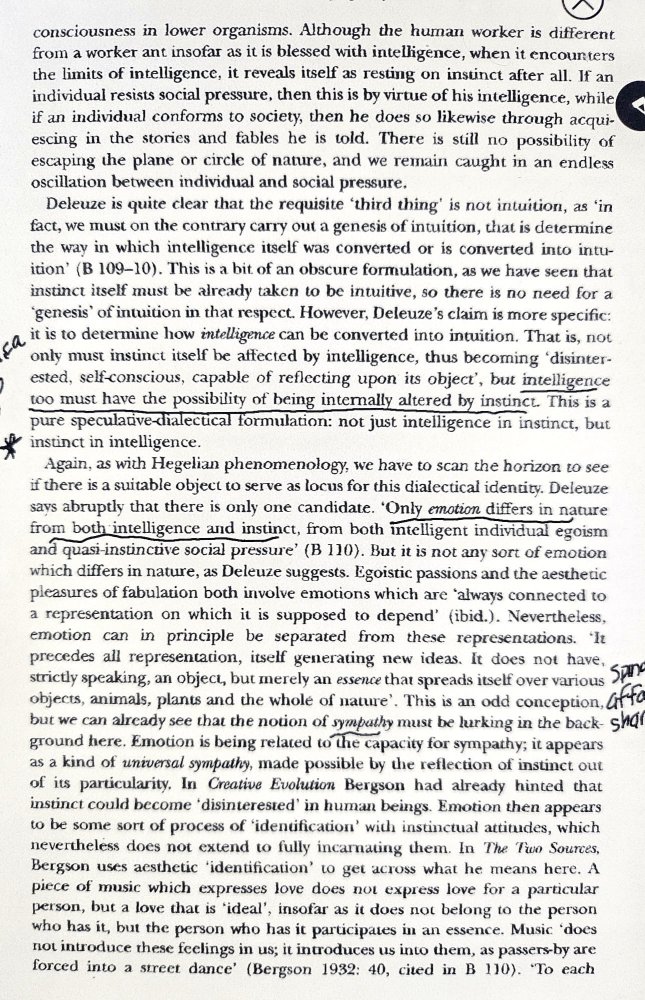

.thumb.jpeg.3d3aab39f52c8c812496637b0ebe6d37.jpeg)
